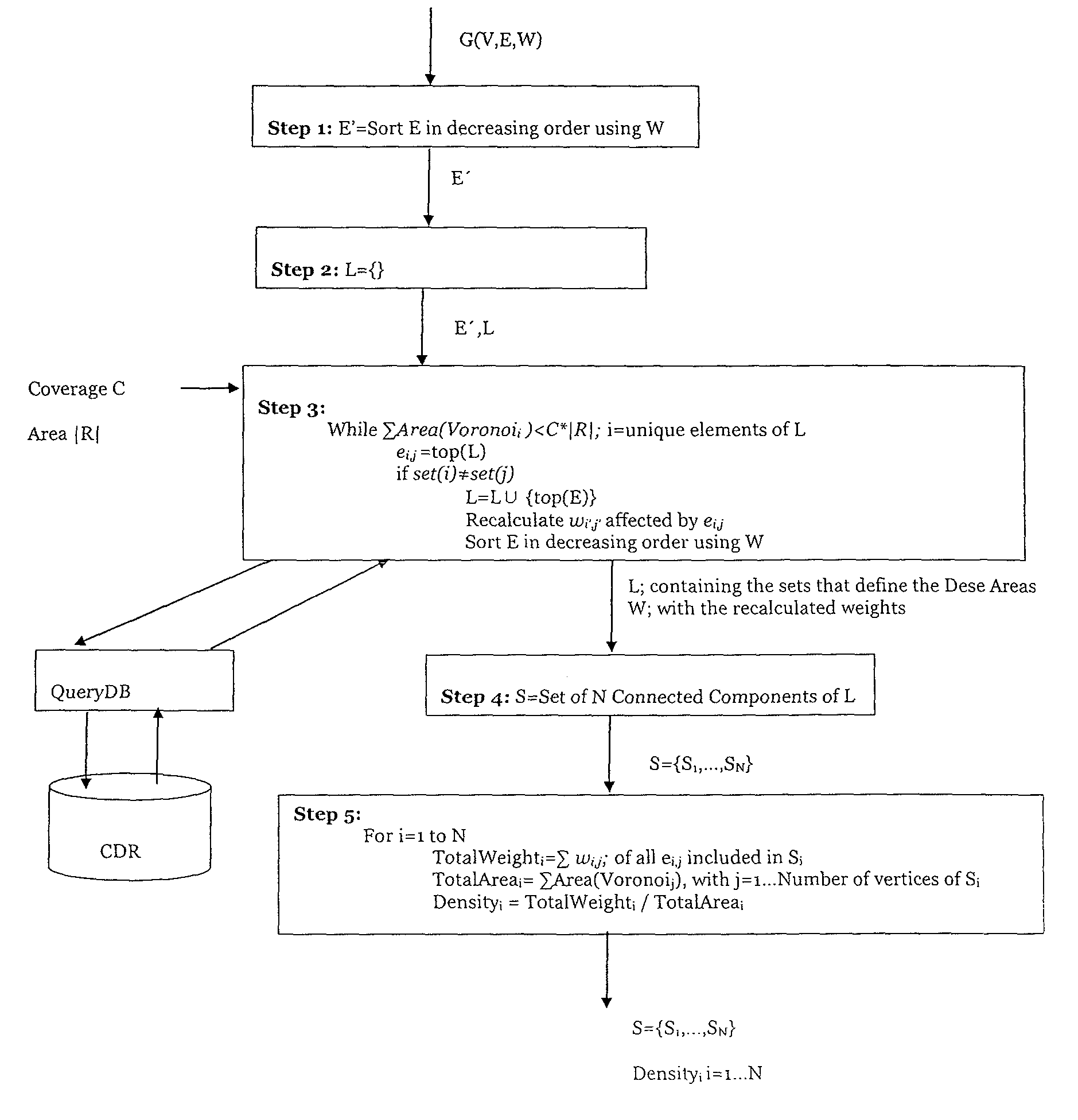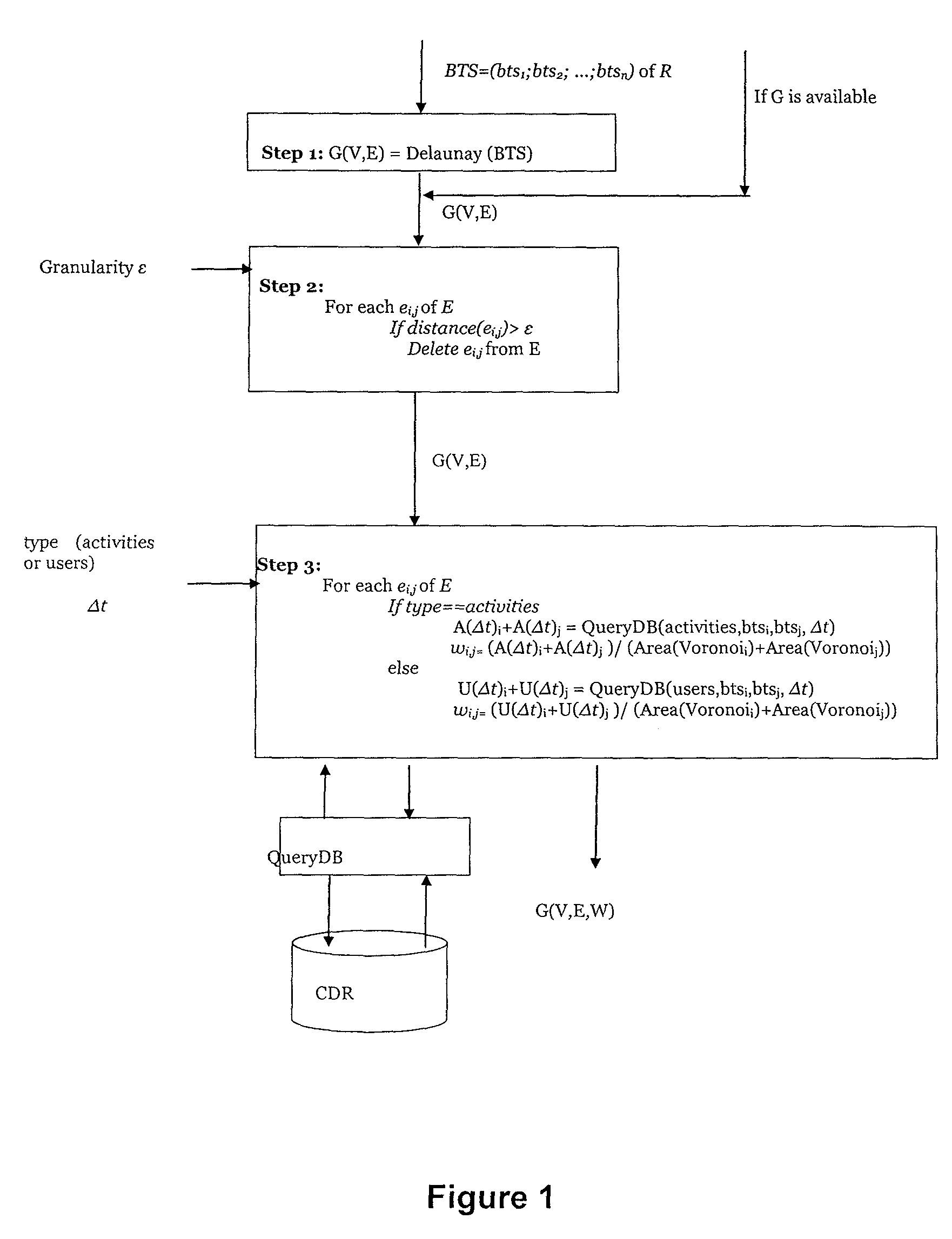Method for an automatic identification of urban dense areas from cell phones records
a cell phone record and automatic identification technology, applied in the field of automatic detection of urban dense areas, can solve the problems of not always easy to estimate, methods cannot be applied to the current domain, and no guarantee of detecting all maxima
- Summary
- Abstract
- Description
- Claims
- Application Information
AI Technical Summary
Benefits of technology
Problems solved by technology
Method used
Image
Examples
Embodiment Construction
[0029]The Dense Area Discovery method (DAD) method of this invention has been designed to automatically discover dense areas of activities or unique users in a specific geographical region R and during a determined period of time Δt such that: (1) it respects the original tessellation of the space defined by the cell phone network; (2) it does not need as input the number of dense areas (e.g. the number of clusters) to be identified; and (3) it guarantees that all dense areas are identified, covering up to a maximum percentage of the total region under consideration. In the scenario of the invention, the geographical region R corresponds to the total area where the dense areas have to be identified. Typically three levels are of interest: urban, regional and national.
[0030]Given an initial set of BTS=(bts1; bts2; . . . ; btsN) that gives coverage to a geographical region R characterized by its Voronoi tessellation, R=(V1, V2, . . . , Vn), it seeks to discover the optimal disjoint su...
PUM
 Login to View More
Login to View More Abstract
Description
Claims
Application Information
 Login to View More
Login to View More - R&D
- Intellectual Property
- Life Sciences
- Materials
- Tech Scout
- Unparalleled Data Quality
- Higher Quality Content
- 60% Fewer Hallucinations
Browse by: Latest US Patents, China's latest patents, Technical Efficacy Thesaurus, Application Domain, Technology Topic, Popular Technical Reports.
© 2025 PatSnap. All rights reserved.Legal|Privacy policy|Modern Slavery Act Transparency Statement|Sitemap|About US| Contact US: help@patsnap.com



